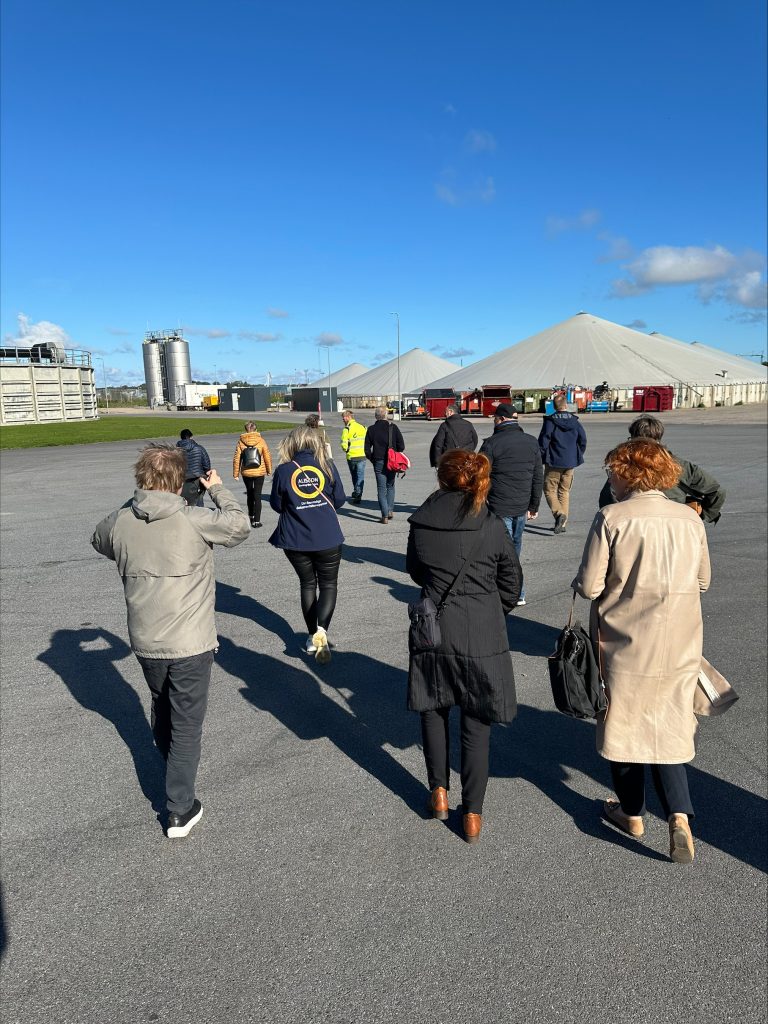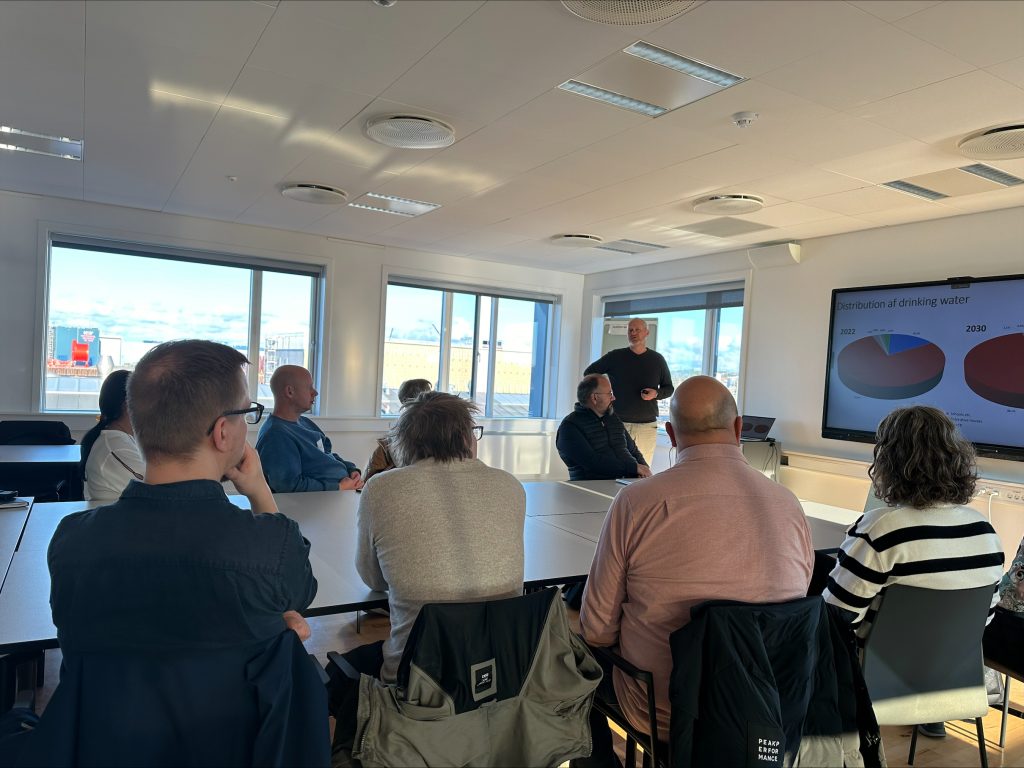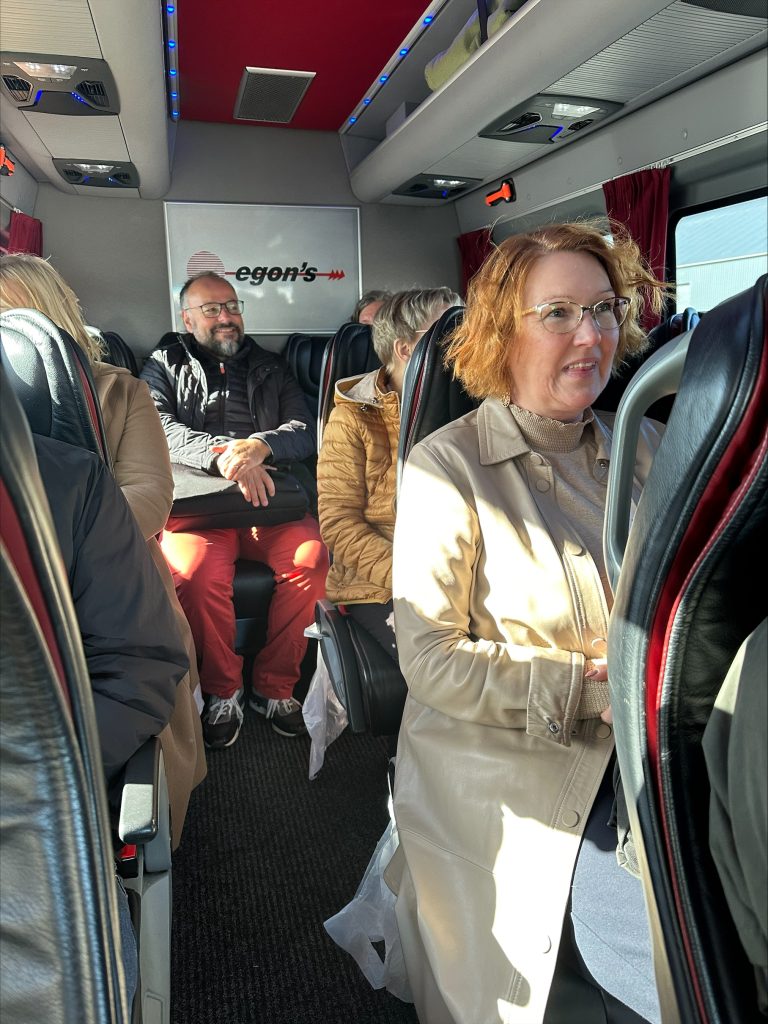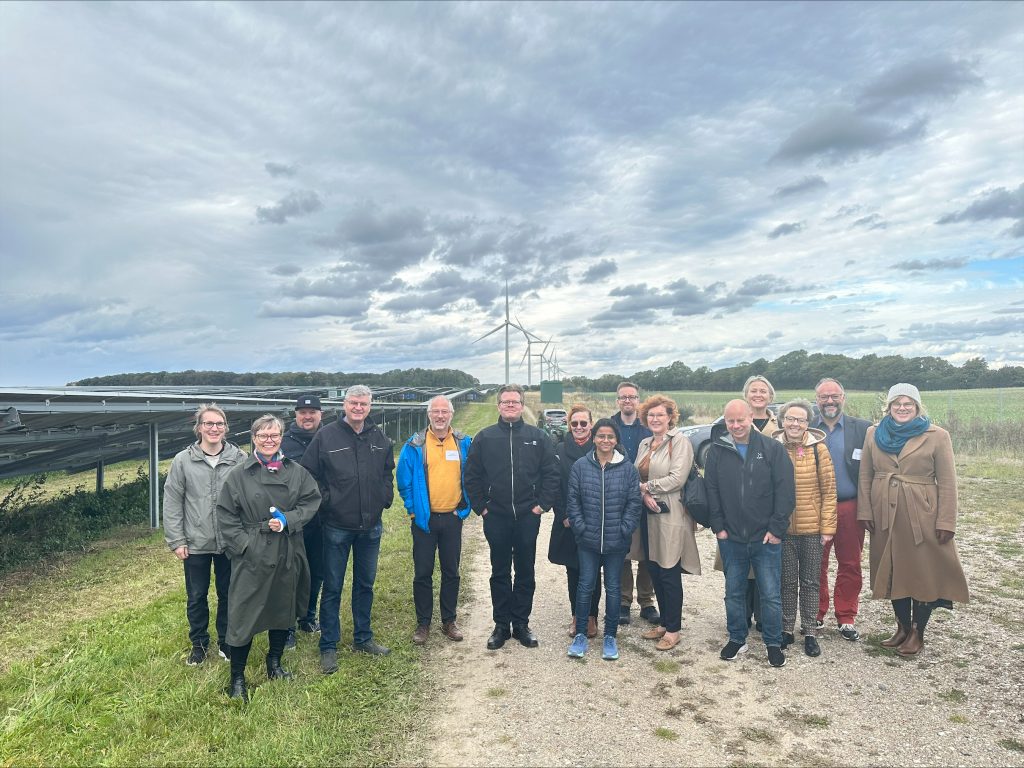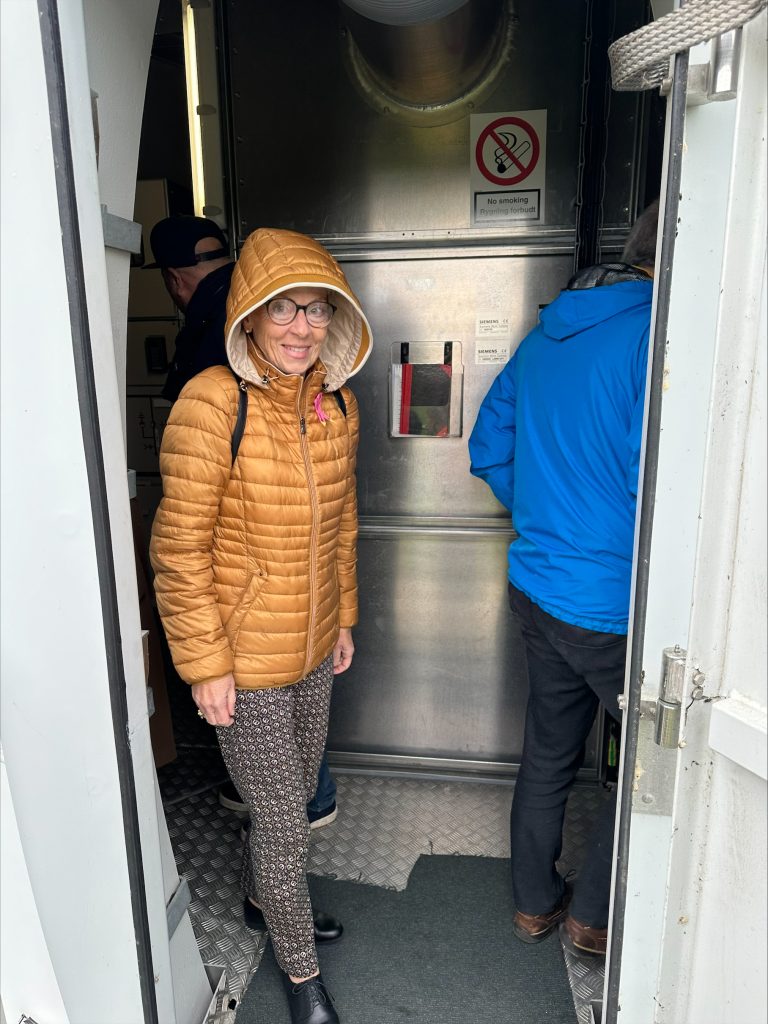On October 1 and 2, 2024, Kalundborg Symbiosis welcomed the transnational work group as part of the Green Industrial Areas (GIA) project for an insightful peer review session. Over two intensive days, participants from Finland and Sweden experienced Kalundborg Symbiosis’ pioneering approach to sustainable industrial practices, observing how collaboration across sectors drives resource efficiency, energy transition, and environmental responsibility.
Exploring Kalundborg Symbiosis
The two-day program was designed to offer an in-depth view of Kalundborg Symbiosis’ sustainable infrastructure, focusing on renewable energy sources, water management, and the recycling and reuse of resources. Participants visited several key sites to observe these principles in practice.
One of the highlights was a visit to Scandinavia’s largest solar park at Lerchenborg. Guided by Amalie and Christian Lerche-Lerchenborg, the group toured the solar panels and windmill installations, gaining valuable insights into the facility’s contribution to Denmark’s renewable energy targets. This visit illustrated the effectiveness of combining solar and wind energy to create a resilient, diversified energy source — a core focus of the GIA project’s energy transition efforts.
Another notable visit was to Kalundborg Bioenergy, where participants learned about the company’s cutting-edge strategies for minimizing odor pollution. The visit demonstrated how bioenergy production can help reduce emissions while promoting sustainability in industrial operations.
Participants also visited Kalundborg Utility, where they explored the topics of wastewater treatment, water management, and a new district cooling project. This visit showcased how local industries cooperate to optimize water use and recycling. The model of circular water management in Kalundborg demonstrates how industrial symbiosis can reduce environmental impact while enhancing sustainability.
A visit to Aliscon introduced the group to the company’s approach to Environmental, Social, and Governance (ESG) reporting. As ESG considerations become increasingly significant for industries worldwide, Aliscon’s methods for documenting and communicating sustainability performance serve as an example of best practice.
Green Industrial Areas project
This peer review supported the ongoing development of the GIA project’s Guideline for the Certification of Green Industrial Areas and Compendium of Good Practices in Energy Transition, both of which aim to establish transnational sustainability standards across the Baltic Sea Region. Feedback from these reviews will shape the final versions of these tools, which are currently being piloted in six industrial areas.
We would like to thank our visitors for their active engagement, insightful contributions, and open dialogue. Special thanks also to companies who opened their doors and showcased their work, contributing to the success of this peer review.



